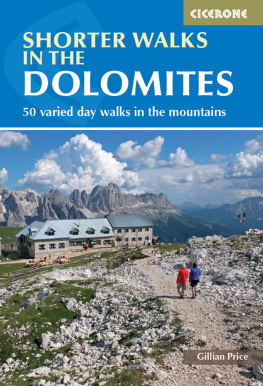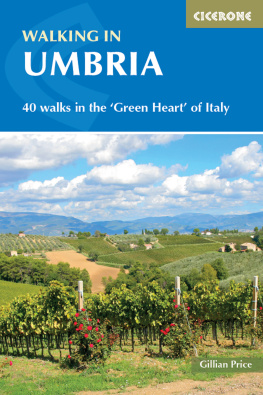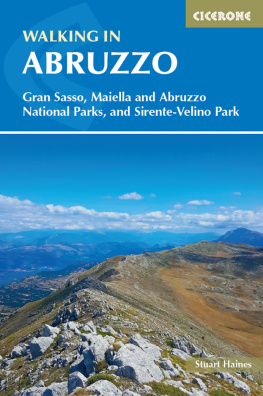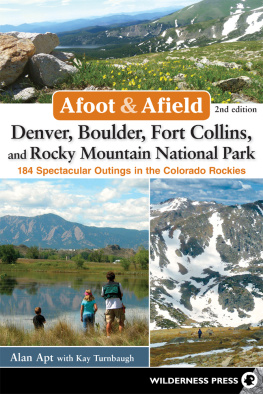The Best Hikes in Italy:
An Insider's Guide
Michael H. Sedge
Hunter Publishing, Inc
PART I
Italy Outdoors
Nature conservation was written about by the ancient Romans. During the Renaissance, the alpine Forest of Cansiglio was declared a protected area by the Republic of Venice, with very severe penalties for anyone who endangered the zone. Today this tradition of conservation continues.
The first two Italian national parks, Abruzzo and Gran Paradiso, were created in 1922, and at that time the country seemed well attuned to the conservation of nature. But for political, cultural and economic reasons, after 1933 Italy did relatively little to save its natural environments for nearly 40 years.
It was only after 1970, the Year of European Conservation, that a new environmental attitude began to take shape. A growing conservation movement developed public concern about the urgent necessity for more protected areas, leading to significant steps by both national and local governments.
Today, thanks to the ceaseless efforts of the Committee for Italian National Parks and Equivalent Reserves, the World Wildlife Federation, and other protectionist organizations, the national government has developed and enlarged the existing national parks and created a considerable number of new reserves. At the same time, regional governments have begun taking concrete action to protect these zones. Though the administration of these protected areas is not always what it should be, in recent years the total area of the national parks has gone from 494,000 to 666,900 acres, with 148,200 acres of national reserves, 49,400 acres of wetlands and wildlife refuges, and 247,000 acres of regional parks. In 1971, the total budget for protected areas was 500 million lire. Now, more than 8,000 million lire is being spent.
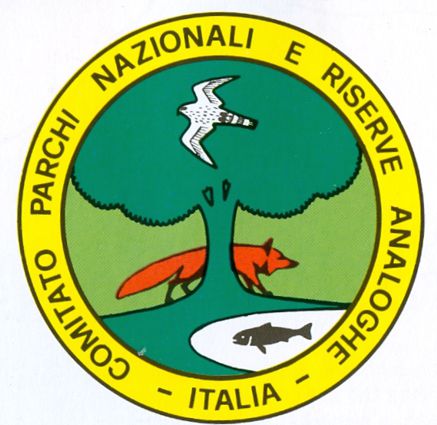
Emblem of the Italian National Parks & Equivalent Reserves
According to the Italian Committee for National Parks and Equivalent Reserves, approximately 1.7% of Italy is currently protected. They are fighting to increase this figure, considering the numerous mountain, lake, and sea locations that the country offers. Their goal is not excessive when one considers that Germany protects about 25% of its territory, Great Britain 10%, France 8%, and the United States, New Zealand and Japan, as well as various African nations such as Kenya, Tanzania, Rwanda and the Ivory Coast, about 10%.
Public opinion, especially among young people, seems very concerned about the goal of increasing Italy's natural environments. Several new parks were added over the past two decades. Some of these lie on the mainland, but two very important ones are located on islands: in Sicily (Etna, one of the most spectacular active volcanoes in Europe); and in Sardinia (mountains and coasts harboring the last mufflons, red deer, vultures and monk seals).
Protected Areas in Italy
There are 24 national parks in Italy. The major parks include: Stelvio and Gran Paradiso, located in the northern Alps; Circeo and Abruzzo, in the central area of the peninsula; and Calabria, specifically the Sila Mountain range at the toe of the Italian boot. These five parks account for nearly 667,000 acres of breathtaking meadows, forests, mountains, lakes, streams, and coastal environments. Here the adventurer will discover not only some of the nation's finest natural environments, but much of its wildlife and a variety of people, traditions and habitats. Detailed descriptions of Italy's national parks can be found later in this book.
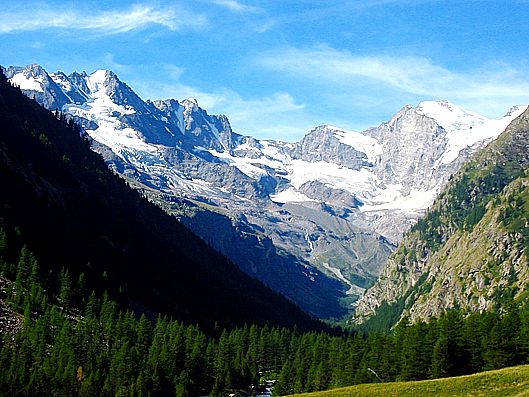
Parco Nazionale del Gran Paradiso (Chandra Malorni)
There are also 147 regional parks throughout the Italian peninsula, 30 marine parks, and hundreds of national and regional nature reserves. All of these offer excellent walking and trekking opportunities to visiting adventurers. For more information on these locations, including up-to-date information on hiking itineraries, tour guides, visitor centers, diving centers, places to eat and sleep, local produces, as well as books and CDs, visit the Italian Parks website, www.parks.it .
Park Regulations
As in all protected areas, there are certain rules and regulations that must be followed in Italian parks and reserves. It is forbidden to: 1) leave designated trails or hiking routes; 2) start open fires there are an average 700,000 countryside fires in Italy each year, causing 6,300 billion lire worth of damage; 3) camp in areas other than those designated; 4) discard garbage and other refuse; 5) disturb, molest or kill wildlife in any way; 6) damage, destroy, or remove nests, eggs or other elements of the natural environment, including plants and flowers; 7) bring dogs into protected areas, even if leashed; 8) carry arms of any type; 9) drive automobiles and/or motorcycles along undesignated routes.
Above all, park officials ask visitors to leave the environment as they found it.
Fauna
Despite what some people say most often those who never leave the big cities Italy has a vast variety of animal life. There are 105 mammal species found on the peninsula and neighboring islands, 230 species of birds, 30 amphibians, 51 reptiles, and 56 varieties of fish.
Brown bear, chamois, red and roe deer are all found here, as are wolf, wild cat, otter, marten, polecat, badger, fox, hares, moles, hedgehogs, marmot, weasel and squirrels. Some of the more unusual creatures one might encounter are wild boar and ibex.
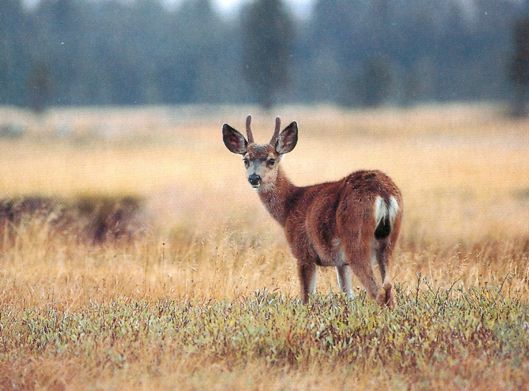
Wildlife abounds in much of the Italian peninsula
There are many types of reptiles throughout the country: vipers, water snakes, slow-worms, both land and water tortoises and green lizards.
Next page




